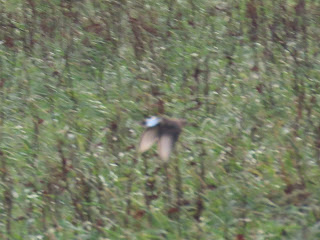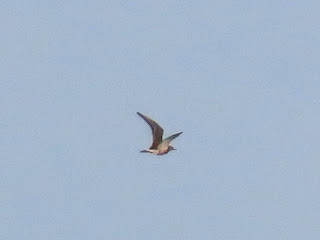Final day on Sanday (but still with a second boat crossing to do and then 700-ish miles to drive tomorrow, and possibly Sunday if I don't last the distance in one day!).
I shall miss it for sure, the wilderness, the solitude, the relaxed atmosphere. But I won't miss the wind, which this year has been pretty persistent.
Today was no exception, with more sharp showers thrown in, but despite the testing conditions it's been an excellent day for swans and geese.
I didn't exactly rush out though, waiting for a couple of particularly nasty showers to pass. And most of what I've done has involved driving around scanning fields and lochs. It's mostly been too windy to be getting amongst bushes after small birds, and similarly I didn't fancy walking any loops, being battered the whole time and intermittently drenched!
First decent birds were a group of 4 Pale-bellied Brent Geese on the Overbister road, a small taste of things to come.
Heading out east I encountered my first flock of Whooper Swans of the day: seven birds at Newark that briefly settled on the water there before continuing into the howling westerly.
I decided to head straight for seawatch, and there on the sea was another Whooper flock, that eventually headed over land.
Next up was another flock of seven, which rather conveniently flew right past Start Point's humbug-striped lighthouse.
A Merlin zipped past Neuks a couple of times, and 4 Snow Buntings were accompanied by a bonus Siskin, the 111th and final addition to the trip list.
The seawatch itself (1¼ hrs of it) included 8 Sooty Shearwaters, 100 Kittiwakes, singles of Arctic and Great Skua and perhaps as many as 3 Great Northern Divers.
Also more wildfowl, with two flocks of Pink-footed Geese passing through, plus a pair of Barnacle Geese and a couple of small flocks of Greylag Geese arriving.
I drove the North Loch loop today, stopping off for more incoming Whooper Swans , plus good numbers more on Loch Rummie and North Loch.
More Pink-footed Geese headed over too, with a final count of moving birds of 222 (plus a grounded flock of 15 at Oyce later).
And one last flock of Whoopers on Loch Langamay took the total for those to 150.
A Brambling was seen along the Cleat road.
After lunch I drove the roads of the Burness peninsula again, scanning through loads more wader flocks and failing to find anything rarer than the Ruff.
And Stangasettar "garden", which last year was a great source of migrants, but this year has had none, turned up something at last, in the shape of a late Willow Warbler.
So I'm now off Sanday and waiting to board the boat at Stromness, very sad to be leaving Orkney again.



























































